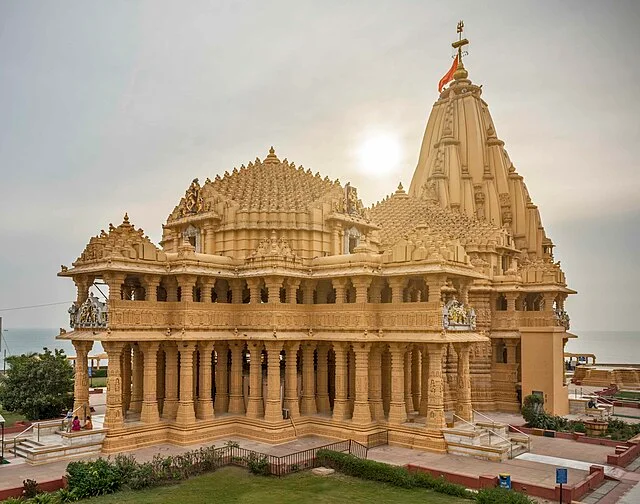The Somnath Temple, one of India’s most revered and historic Hindu temples, holds a remarkable place in religious and architectural history. Dedicated to Lord Shiva, it is renowned for its intricate design, cultural significance, and a long history marked by cycles of destruction and reconstruction. Located on the western coast of Gujarat in Prabhas Patan near Veraval, the temple is considered the first among the twelve jyotirlinga shrines, which are sacred sites dedicated to Lord Shiva.
Get your dose of History via Email
Origins and Early History
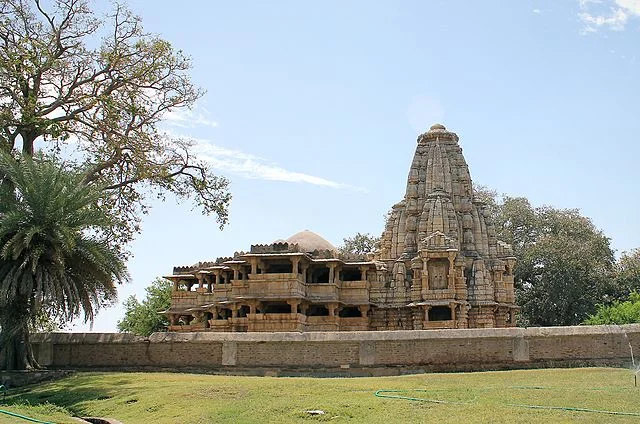
The origins of the Somnath Temple trace back to ancient Indian texts and legends, with accounts mentioning its existence as early as 300 AD. The Skanda Purana, a sacred Hindu text, describes the temple and its importance in great detail. According to legend, the temple was originally built by the moon god Soma in gratitude to Shiva for relieving him from a curse. This connection gave the temple its name, “Somnath,” meaning “Lord of Soma.”
Archaeological evidence suggests that a temple existed at the site during the Gupta period, around 4th-5th centuries AD. This period marked the temple’s early significance as a center of Shiva worship, attracting pilgrims from across India.
Cycles of Destruction and Reconstruction
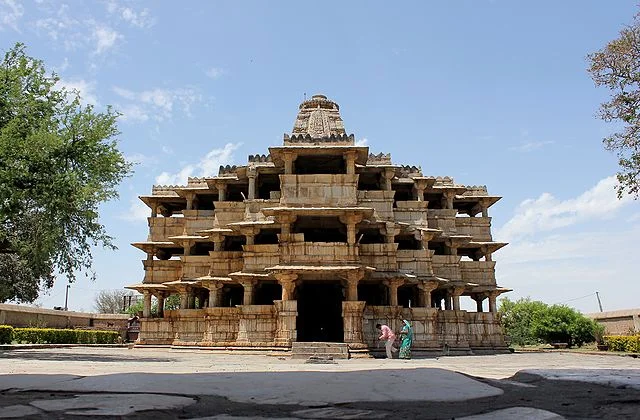
Throughout its history, the Somnath Temple has faced repeated cycles of destruction and reconstruction. Several Islamic invaders, beginning with Mahmud of Ghazni in 1025 AD, targeted the temple for its wealth and religious symbolism. Mahmud’s attack was particularly devastating. He destroyed the temple and looted its treasures, marking one of the earliest invasions on a prominent Hindu temple in India.
Following Mahmud’s invasion, local rulers and Hindu dynasties, including the Solanki Rajputs, took on the task of rebuilding the temple. The temple was rebuilt several times over the centuries, only to face further destruction at the hands of other invaders, including the Delhi Sultanate under Alauddin Khilji in the early 14th century and later by Mughal emperor Aurangzeb in 1665 AD. Despite these setbacks, Somnath remained an enduring symbol of resilience and faith.
Architecture and Design
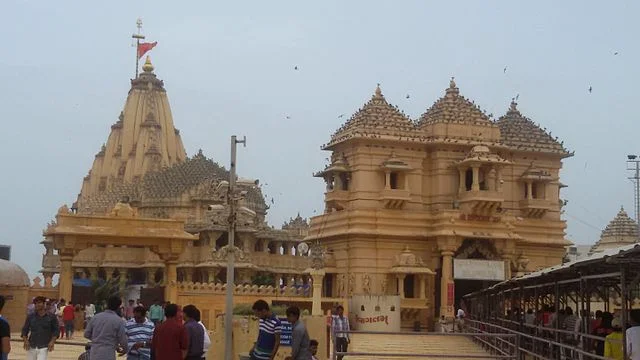
The current structure of the Somnath Temple, built in 1951, reflects the traditional Chalukya style of architecture. The design emphasizes intricate carvings, pillars, and sculptures that depict scenes from Hindu mythology. This reconstruction project was led by Sardar Vallabhbhai Patel, one of India’s most prominent leaders, and aimed to restore Somnath to its former glory as a significant site of Hindu worship.
The temple stands 155 feet tall, with a prominent shikhara (spire) that captures the eye. Inside, the sanctum houses the jyotirlinga, a symbol of Lord Shiva’s infinite power. The temple’s architecture follows principles laid out in the ancient Indian architectural text, the Shilpa Shastra, creating a symmetrical, balanced design intended to evoke spirituality and reverence.
The Importance of the Jyotirlinga
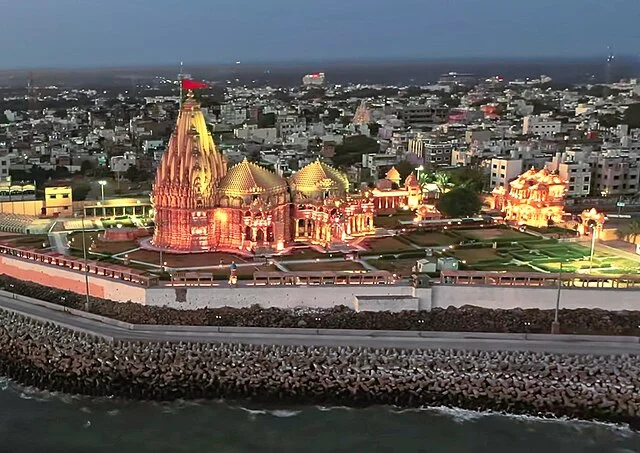
The jyotirlinga at Somnath is one of twelve sacred shrines spread across India, each representing a form of Shiva. According to Hindu tradition, jyotirlingas hold immense spiritual power and are believed to be places where Shiva manifested as a column of light. Pilgrims from across India visit the Somnath Temple to offer prayers and seek blessings from this jyotirlinga.
In Hindu belief, the jyotirlingas are symbols of Shiva’s protection and support, inspiring both devotion and resilience among followers. The Somnath jyotirlinga, in particular, is considered highly auspicious and attracts thousands of pilgrims yearly.
Restoration and Modern Significance
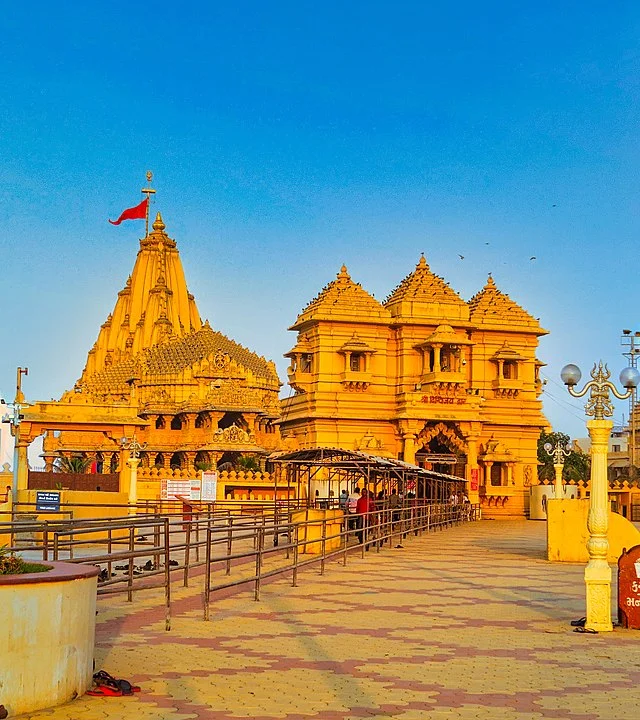
In the post-independence period, the Indian government, under the guidance of Prime Minister Jawaharlal Nehru and Home Minister Sardar Patel, took an active interest in restoring Somnath Temple. The temple’s reconstruction in 1951 marked a significant cultural and historical moment, symbolizing the renewal of ancient traditions and faith. The President of India, Dr. Rajendra Prasad, inaugurated the new temple, emphasizing its historical significance and national importance.
Today, the temple stands as a testament to India’s resilience and religious heritage. It attracts not only pilgrims but also tourists interested in its historical and architectural value. Managed by the Shree Somnath Trust, the temple hosts various religious events and festivals, including Maha Shivaratri, which draws thousands of devotees annually.
Conclusion
The Somnath Temple’s history reflects both the endurance of religious devotion and the challenges faced by India’s cultural heritage over centuries. From ancient times through cycles of destruction and renewal, the temple has symbolized strength and faith for Hindu followers. Today, it remains a significant pilgrimage site, blending centuries-old tradition with the cultural richness of modern India. Somnath’s story serves as a reminder of the resilience of faith and the enduring appeal of India’s sacred heritage.
Source:

